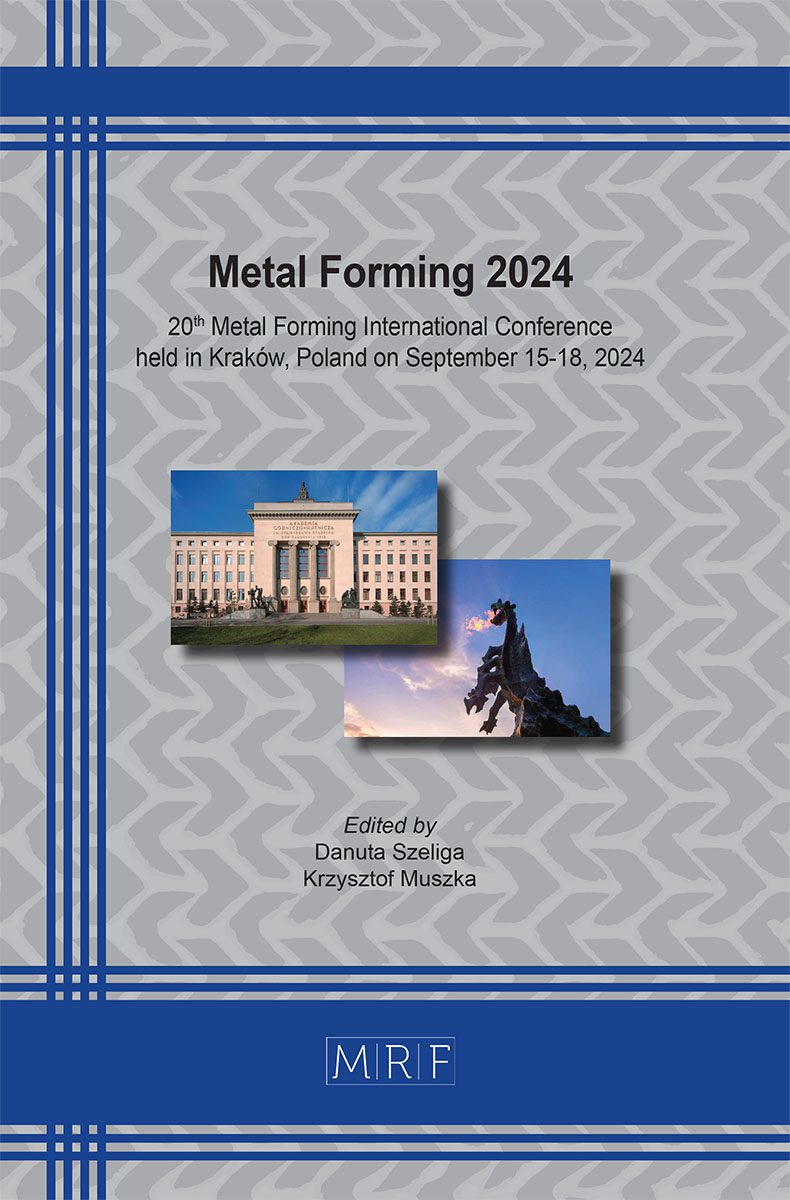–
Suppression of non-uniform deformation using die shape in cylindrical deep drawing
MURAOKA Tsuyoshi, OKUDE Yusuke, NAKAMURA Isao, KATAGIRI Takashi
download PDFAbstract. This study presents a cylindrical deep drawing method that suppresses non-uniform deformation by die shape. In the cylindrical deep drawing, the material inflow in the circumferential direction varies due to the material anisotropy, resulting in unevenness at the edges of the cup, called the ear, after forming. Since the ears are usually trimmed after forming, there are concerns that the ear reduces yield rate and productivity due to the increased number of processes. The main approach study to the suppression of non-uniform deformation due to anisotropy has been the development of materials with suppressed material anisotropy. However, material development has been difficult to introduce because of the increased costs involved, and there has been a lack of development from the press process side. Therefore, this study clarified the effect of die shoulder radius on forming shapes in “Multiple R die” for cylindrical deep drawing by experiments and finite element analysis. Ear height can be suppressed if forming is performed in such a way that the effects of anisotropy and die shape cancel out each other by experimental and analysis results.
Keywords
Deep Drawing, Anisotropy, Die Shape, Ear Height, Stainless Steel
Published online 9/15/2024, 10 pages
Copyright © 2024 by the author(s)
Published under license by Materials Research Forum LLC., Millersville PA, USA
Citation: MURAOKA Tsuyoshi, OKUDE Yusuke, NAKAMURA Isao, KATAGIRI Takashi, Suppression of non-uniform deformation using die shape in cylindrical deep drawing, Materials Research Proceedings, Vol. 44, pp 635-644, 2024
DOI: https://doi.org/10.21741/9781644903254-68
The article was published as article 68 of the book Metal Forming 2024
![]() Content from this work may be used under the terms of the Creative Commons Attribution 3.0 license. Any further distribution of this work must maintain attribution to the author(s) and the title of the work, journal citation and DOI.
Content from this work may be used under the terms of the Creative Commons Attribution 3.0 license. Any further distribution of this work must maintain attribution to the author(s) and the title of the work, journal citation and DOI.
References
[1] T. Ohba, Present Status and Future Prospects of Automotive Weight Reduction -Expectations to Future Plastics and Adhesive Technology, J. Adhesion Soc. Jpn. 49-7 (2013) 260-266. https://doi.org/10.11618/adhesion.49.260
[2] N. Kotkunde, H. N. Krishnamurthy, S. K. Singh and G. Jella, Experimental and Numerical Investigations on Hot Deformation Behavior and Processing Maps for ASS 304 and ASS 316, High Temp. Mater. Proc. 37 (2018) 873-888. https://dx.doi.org/10.1515/htmp-2017-0047
[3] Y. Okude, T. Iwaoka, I. Nakamura, T. Katagiri, T. Muraoka, Development of Method of Cold Incremental Drawing and Ironing Ti-6Al-4V Alloy Sheets, JSTP 62-729 (2021) 133-138. https://doi.org/10.9773/sosei.62.133
[4] Y. Inoue, Masahiro Yamaguchi, Effect of Si content on earing behavior in deep drawing of 3104 aluminum alloy sheets, JILM 73-1 (2023) 17-23. https://dx.doi.org/10.2464/jilm.73.17
[5] H. Hamasaki, Anisotropic yield function of aluminum alloy sheet for accurate press forming simulation, JILM 65-11 (2015) 536-541. https://doi.org/10.2464/jilm.65.536
[6] T. Kuwabara, K. Hashimoto, E. Iizuka, J. W. Yoon, Effects of anisotropic yield functions on the accuracy of forming simulations of bore expansion, JSTP 50-585 (2009) 925-930. https://doi.org/10.9773/sosei.50.925
[7] W. Phanitwong, S. Thipprakmas, Multi draw radius die design for increases in limiting drawing ratio, Metals 10-870 (2020) 1-17. https://doi.org/10.3390/met10070870
[8] W. T. Lankford, S. C. Snyder, J. A. Bausher, New criteria for predicting the press performance of deep drawing sheets, Trans. ASM 42 (1950) 1197.
[9] R. Hill, A theory of the yielding and plastic flow of anisotropic metals, Proc. Roy. Soc. A193 (1948) 281. https://doi.org/10.1098/rspa.1948.0045
[10] T. Ohwue, K. Sato, Y. Kobayashi, Analysis of Earring in Circular-Shell Deep-Drawing Test, Trans. Jpn. Soc. Mech. Eng. A 79-801 (2013), 595-608. https://doi.org/10.1299/kikaia.79.595













